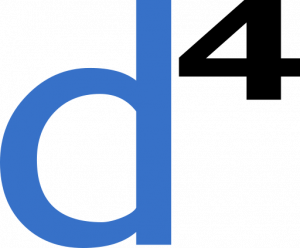Data centers are frequently the backbone of modern enterprises’ IT infrastructure. Their capacity to store, manage, and protect vast amounts of sensitive information is crucial for business continuity. Yet, despite advancements in technology, unforeseen disasters—ranging from natural calamities to cyberattacks—still pose significant threats. This reality has underscored the vital need for a robust disaster recovery (DR) strategy. Effective disaster recovery isn’t just an IT issue; it’s a comprehensive approach that impacts every facet of an organization.

Crafting a sound DR plan is riddled with challenges. Data center clients often grapple with complexities like identifying critical systems, assessing risks accurately, and integrating diverse backup solutions. Many organizations underestimate these hurdles until it’s too late—when their operations come to a grinding halt due to unexpected events. Navigating this intricate landscape requires technical know-how, informed decision-making, and strategic foresight. In this article, we will outline essential steps you can take to fortify your data center against disasters and ensure continuity when it matters most.
Assessing Your Current Infrastructure
Before diving headfirst into a disaster recovery plan, conducting a thorough assessment of your current infrastructure is crucial. A comprehensive risk assessment allows IT managers to pinpoint potential vulnerabilities within their systems. For instance, understanding how these threats could impact your data center is essential if you operate in an area prone to natural disasters like hurricanes or earthquakes. Factors such as power failures, hardware malfunctions, and human error should also be considered. By cataloging possible risks and their impact on business operations, organizations can prioritize which areas need the most attention in their disaster recovery strategy.
Once risks are identified, the next step involves recognizing critical systems and data that are vital for ongoing operations. This might include everything from customer databases and financial records to proprietary software applications that facilitate day-to-day activities. Knowing which systems cannot afford downtime helps formulate effective recovery strategies tailored to each asset’s needs.
Equally important is evaluating existing backup strategies to ensure they align with objectives. Are backups occurring regularly? Are they stored off-site or utilizing cloud-based solutions for redundancy? A common pitfall many organizations encounter is relying solely on on-site backups without additional contingencies. For example, if all backup servers are located within the same geographic area as the primary data center, a catastrophic event could threaten both facilities simultaneously. Exploring options combining on-site resources with off-site or cloud-based backups provides an added assurance that critical data can be swiftly restored even when disaster strikes.
In sum, assessing your current infrastructure goes beyond ticking boxes—it’s about gaining a robust understanding of your environment’s vulnerabilities while prioritizing the preservation of mission-critical assets. Establishing this groundwork is beneficial and essential for creating a resilient disaster recovery plan that truly safeguards business continuity.
Developing a Comprehensive Disaster Recovery Plan
Crafting an effective disaster recovery plan (DRP) begins with defining two primary recovery objectives: Recovery Time Objective (RTO) and Recovery Point Objective (RPO). RTO is the maximum acceptable amount of time that systems can be down after a disaster; for instance, a financial institution may set an RTO of two hours to ensure minimal disruption to its transactional services. RPO, on the other hand, indicates the maximum acceptable data loss measured in time. A company storing critical records might demand an RPO of just 15 minutes, requiring frequent backups to minimize potential data loss. Clearly delineating these objectives not only sets expectations but also helps in configuring and prioritizing resources during a crisis.
Once you have established your RTO and RPO, identifying clear roles and responsibilities among team members becomes paramount. Assigning specific duties ensures accountability during emergencies when chaos could otherwise reign. For example, designating specific IT staff as incident commanders helps centralize decision-making and establish a clear chain of command. One practice some organizations adopt is using “role-play” situations where team members practice their assigned tasks; this allows them to become more familiarized with their responsibilities within the broader context of disaster recovery operations.
Equally essential is integrating effective communication plans tailored to stakeholders ranging from executives to operational staff. In times of disaster, timely information flow is crucial for maintaining trust and collaboration across departments. For instance, craft standard operating procedures for notifying key stakeholders by setting up alert systems through email or text messages upon triggering specific thresholds—such as declaring a disaster situation based on system monitoring alerts. Regularly reviewing these communication protocols ensures everyone remains informed about how updates will be shared amid disruptions. This step boosts morale and accelerates response times as everyone knows what to expect.
In short, developing a comprehensive DRP requires thoughtful consideration around setting recovery objectives, cultivating clearly defined roles among team members, and ensuring open lines of communication exist for all stakeholders involved. Organizations can foster resilience against unforeseen disruptions through such preparedness measures while minimizing negative impacts on business operations.
Implementing Robust Backup Strategies
Implementing robust backup strategies is paramount for ensuring business continuity. When weighing options, organizations must consider the benefits and limitations of both on-site and off-site backups. On-site backups, where data is stored within immediate premises, offer quick access and retrieval times. However, they also carry the risk of total loss in a catastrophic event—think fire or flooding that could compromise all physical resources at one location. A balanced approach often involves combining these methods to leverage their strengths while mitigating vulnerabilities.
Cloud-based backup solutions have emerged as a game-changer in today’s digital landscape. They provide flexibility and scalability, allowing companies to store vast amounts of data off-site securely. For example, a small business experiencing rapid growth can easily scale its cloud storage capabilities without incurring substantial infrastructure costs. Cloud providers generally offer advanced security measures such as encryption and multi-factor authentication to safeguard sensitive information against breaches. By utilizing cloud services alongside on-site backups, organizations create a layered strategy that protects data and ensures quicker recoverability.
Regular maintenance cannot be overlooked, regardless of where your backups are stored. Establishing a schedule for backups—be it daily increments or weekly snapshots—is essential for maintaining up-to-date copies of crucial data systems. Automating this process can significantly reduce errors while ensuring compliance with company policies or regulatory requirements that demand specific retention periods for certain types of data. As an illustration, financial institutions often implement frequent incrementally scheduled backups to adhere to stringent compliance regulations; missing even one could lead to substantial penalties or operational disruptions.
By thoughtfully combining various backup strategies—on-site, off-site, and cloud-based—and ensuring regular scheduling practices are firmly established, organizations create a resilient backbone for their disaster recovery plans. Ongoing evaluation and adjustments will fine-tune this system over time as technology advances and operational needs evolve. This proactive mindset is fundamental in the face of evolving threats in today’s complex IT landscape; when it comes to safeguarding your organization’s vital data assets against potential disasters, preparation is your strongest ally.
Creating Effective Failover Procedures
Developing failover procedures is critical to ensuring that your data center can maintain business operations during unforeseen disruptions. One of the foundational elements of these procedures involves building redundant systems and pathways. Redundancy ensures that backup resources are in place if primary systems fail. For instance, multiple power sources, such as uninterruptible power supplies (UPS) or generators, can provide the necessary energy when utility failures occur. Similarly, utilizing diverse network paths helps prevent bottlenecks; should one connection falter, traffic can reroute seamlessly to another available pathway.
Automation plays a crucial role in enhancing the speed and efficiency of failover processes. Automated failover ensures a rapid switch-over to alternative systems without human intervention, which minimizes downtime and protects sensitive data from potential loss. For example, many organizations leverage software-defined networking (SDN), which automatically adjusts routing protocols based on real-time network conditions. This level of automation increases recovery speed and alleviates stress on IT staff during crises when rapid decision-making is essential.
To ensure that your failover strategies are effective, it’s vital to regularly test various scenarios to identify any weaknesses within your plan. Conducting thorough testing allows you to evaluate how well your systems respond under duress—be it complete server outages or unexpected spikes in load due to switching over to backup servers. Creating simulated disaster scenarios with varying conditions helps teams pinpoint where latency or misconfigurations may exist. For instance, if a particular application takes too long to recover under specific failure conditions, addressing this vulnerability ahead of time means you are better prepared for actual events.
Developing robust failover procedures is an ongoing process requiring iterative improvement and attention to detail. By focusing on redundancy, leveraging automation for quick recoveries, and testing extensively, data centers can establish a dependable safety net that mitigates risk and safeguards business continuity—even in the face of unexpected challenges.
Regular Testing of Disaster Recovery Plans
Establishing a comprehensive disaster recovery (DR) plan is only the first step in safeguarding your data center’s operations. Regular testing through drills and simulations is essential to ensure that these plans are effective. These scheduled exercises allow your team to simulate various disaster scenarios—such as hardware failures, cybersecurity breaches, or natural disasters—to evaluate how well the DR protocols hold up under pressure. For example, an IT department might conduct a full-scale simulation where they intentionally take down critical systems to see if their backup processes deploy correctly and whether services can be restored within the defined recovery time objectives (RTO).
Documenting the outcomes of these tests is crucial for continual improvement and preparedness. Post-drill analyses should capture insights into what went well and where bottlenecks occurred, allowing teams to adjust policies and procedures rapidly. During its simulations, a financial institution may find that communication delays hindered rapid response times, prompting it to refine its escalation protocols and communication strategies among departments. By engaging in this meticulous documentation process, organizations can evolve their DR plans based on real-world performance feedback rather than assumptions.
Involving all relevant teams during these tests amplifies their effectiveness. Disaster recovery isn’t solely the responsibility of the IT department; other stakeholder teams—from human resources to legal—play pivotal roles during an actual event. Engaging multiple departments in DR drills fosters a culture of collaboration and awareness that strengthens overall resilience. For instance, operations personnel can provide insights on logistical challenges faced during past incidents, while executive teams may help prioritize which business functions must be restored first based on company strategy. This cross-departmental cooperation not only enriches the testing experience but also ensures that everyone understands their roles when it’s time to execute the plan for real.
Ultimately, regular testing is integral to an organization’s disaster readiness strategy. By incorporating routine drilling into your operational cadence—perpetually reviewing and updating based on findings—you create a proactive environment committed to resilience against disruptions. This ongoing commitment fortifies your organization’s agility in responding effectively when faced with unplanned downtime or crisis scenarios.
Continuous Monitoring and Improvement
Continuous monitoring and improvement are vital components of a successful disaster recovery (DR) strategy. Utilizing performance metrics allows IT managers to evaluate the effectiveness of their recovery operations critically. By tracking key performance indicators (KPIs), such as recovery time objective (RTO) and recovery point objective (RPO), organizations can gain insights into how well they can restore services after an incident. For instance, if regular DR drills indicate that restoring critical systems takes longer than the defined RTO, management can adjust protocols or resources accordingly. This iterative process ensures that the DR plan remains relevant and effective.
As technology evolves rapidly, it is essential for businesses to stay abreast of new tools and solutions that can enhance their disaster recovery efforts. For example, advancements in cloud technology now allow companies to leverage hybrid backup solutions, which combine on-premises storage with cloud-based replication for greater resilience. Keeping informed about these cutting-edge technologies enables data center clients to improve existing strategies and capitalize on innovations that could significantly reduce downtime and data loss during catastrophic events.
Revisiting the disaster recovery plan based on growing business needs is equally important. As an organization scales or pivots its operational focus, the risk landscape changes, necessitating adjustments to the DR approach. Assessing how new projects might affect current infrastructure or workloads ensures that resources are allocated efficiently and effectively. A retail company introducing an e-commerce platform during peak holiday seasons might need enhanced failover capabilities compared to previous years when it operated solely brick-and-mortar stores—that adaptability is crucial for long-term resilience.
In conclusion, continuous monitoring through performance metrics, adapting to technological advancements, and revisiting DR plans based on evolving business conditions create a dynamic framework for keeping disaster recovery strategies robust and effective. Emphasizing these elements encourages a proactive rather than reactive mindset within organizations, enabling them to survive crises and thrive in an ever-changing environment.
Conclusion
Effective disaster recovery for data centers hinges on a series of well-defined steps. Begin by assessing your infrastructure and identifying critical systems and data. Develop a comprehensive disaster recovery plan that includes clear roles, responsibilities, and communication strategies. Implement backup solutions—whether on-site or cloud-based—that ensure regular updates. Additionally, create efficient failover procedures that can quickly restore operations when needed.
Remember, the journey doesn’t end after implementing these steps. Ongoing commitment is crucial. Regular testing of your disaster recovery plan and continuous monitoring of performance metrics is essential for adapting to new technologies and evolving business needs. By staying proactive and updating your strategies, you confidently equip your organization to face unforeseen challenges.







